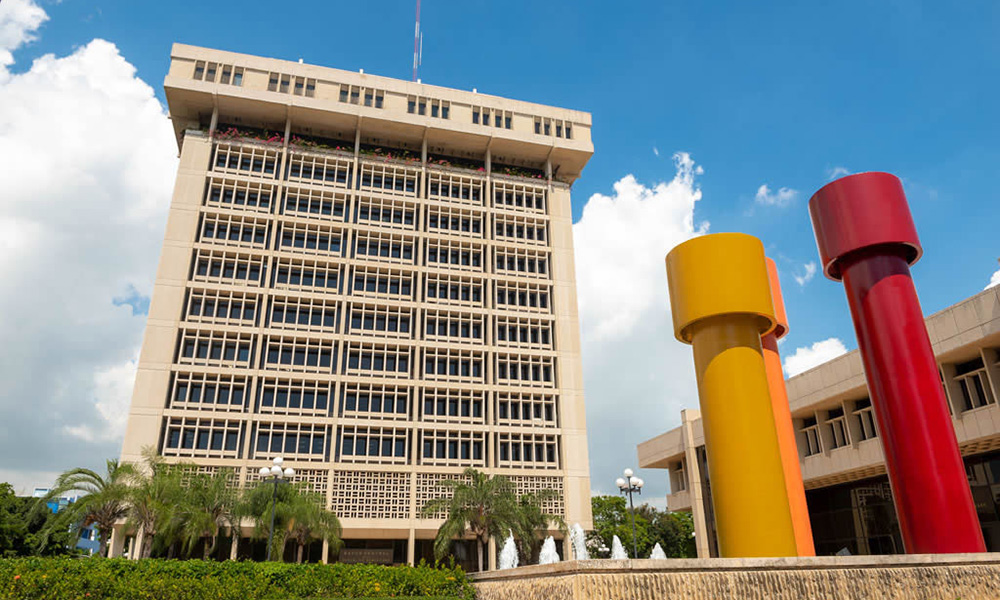The Central Bank of the Dominican Republic (BCRD) increased its monetary policy interest rate (which is a reference rate) by 100 basis points, going from 5.50% per year to 6.50%.
It does so in a context in which the Dominican economy has maintained a good performance, registering an accumulated growth of the monthly index of economic activity (IMAE) of 5.8% in the first four months of the year 2022, after a year-on-year expansion of 4.7 % during the month of April.
According to the information sent by the issuer to the media, the rate of the permanent liquidity expansion facility (1-day Repos) rises from 6.00% to 7.00% per year and the rate of remunerated deposits (Overnight) of 5.00 % to 6.00%.
He said that the decision to raise the MPR is based on an exhaustive evaluation of the recent behavior of the world economy and its impact on inflation, influenced by the recent geopolitical conflicts and the global cost shock.
He explained that price dynamics have been affected by external factors that are more persistent than expected, associated with the increase in oil prices and other important raw materials for local production, as well as the high costs of international container transport and other disruptions in supply chains.
In addition to these external components, the adjustments in the rates of private and public domestic services have been influencing the upward trend in inflation in recent months.
In particular, the monthly variation of the consumer price index (CPI) in April 2022 was 0.96%; while year-on-year inflation, that is, in the last 12 months, stood at 9.64%.
On the other hand, year-on-year core inflation, which excludes the most volatile components of the basket, stood at 7.25% in April, reflecting second-round effects on production associated with external supply shocks.
Seeking to counteract exogenous factors on prices, the Central Bank has been implementing since the end of last year a monetary normalization plan through increases in interest rates and liquidity control measures, with the purpose of facilitating convergence of inflation to the target range.
With the decision of the month of May, the BCRD has gradually and prudently increased its monetary policy rate on five occasions since November 2021, until it is at its current level of 6.50% per year, in line with the cycle of increases in international interest rates.
From the agency’s point of view, going forward, the growth prospects for the Dominican economy have become more conservative due to the high uncertainty prevailing in the international environment.
Economic growth is expected to be around 5.0% for this year, close to its potential and higher than the expansion forecast for Latin America of 2.1%.
On the other hand, credit to the private sector in national currency maintains its dynamism, expanding year-on-year by close to 12% in the month of May.
Liquidity issue
In a complementary manner, the BCRD has reduced the excess liquidity of the financial system this year by some RD$80 billion, through open market operations and the gradual return of the resources that had been granted during the pandemic.
These measures have succeeded in accelerating the monetary policy transmission mechanism, contributing to the adjustment in domestic interest rates and a significant moderation in the growth of monetary aggregates.
This monetary normalization process seeks to avoid risks of overheating of the economy that deepen the inflationary pressures of exogenous origin, as well as a deterioration of the differential with respect to external interest rates that could cause volatility in the flow of capital.
In this active monetary policy scenario, the BCRD has guaranteed that it will be continuously monitoring international financial conditions and the expectations of economic agents, in order to take the necessary measures for a gradual convergence of inflation to the target range of 4% ± 1 % over the monetary policy horizon.
In the international environment, uncertainty remains high due to the conflict between Russia and Ukraine.
The central banks of Latin America do
In Latin America, almost all central banks in the region have continued to increase their reference rates since 2021 to counteract high inflationary pressures, as is the case of Argentina (1,100 basis points), Brazil (1,075 basis points), Chile (775 basis points), Paraguay (650 basis points), Peru (475 basis points), Uruguay (475 basis points), Colombia (425 basis points), Costa Rica (325 basis points), Mexico (275 basis points), Nicaragua (100 basis points) and Guatemala (25 basis points).
In relation to raw materials, the price of a barrel of Texas intermediate oil (WTI) has registered significant increases in recent months, going from an average of US$83 during January 2022 to US$110 per barrel on average during May, trading at the end of the month around US$118 per barrel. Similarly, the international prices of primary food goods, such as corn, wheat, sorghum and soybeans, as well as fertilizers, remain high due to the armed conflict. In the euro zone, growth forecasts have also been revised downwards, with an expected expansion of 2.7% in 2022 according to Consensus.








